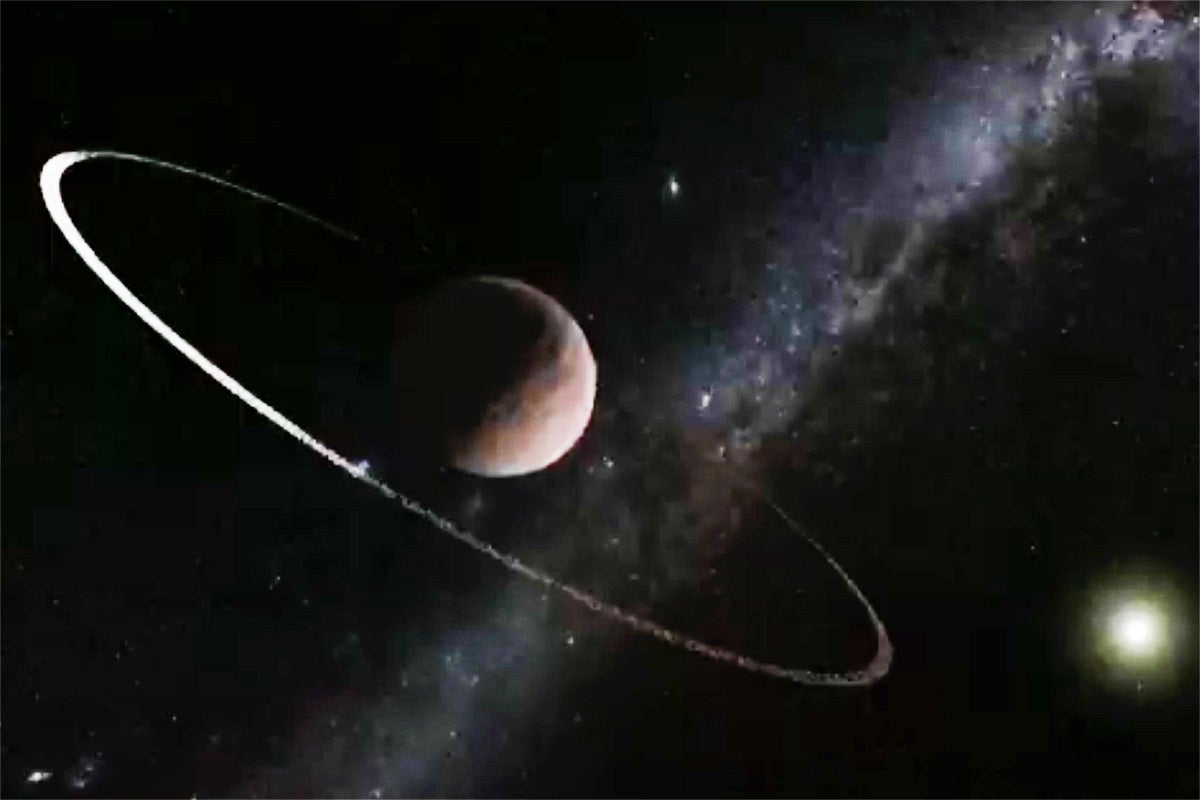A University of Central Florida researcher has helped identify a ring around a trans-Neptunian object 4 billion miles away that defies the current understanding of the physics behind ring formation.
The trans-Neptunian object, Quaoar, is a large enough candidate to be a dwarf planet. Researchers have found that its ring exceeds the Roche limit, or the minimum distance at which the gravitational forces of one celestial body cause a second celestial body to disintegrate.
Until now, all known rings have been found within this limit, as ring material cannot form a satellite or orbiting body at this range.
The findings were published today in Nature.
This discovery suggests that the limit does not always determine where ring material can survive, and it challenges the classical notion of the Roche limit.
Estela Fernández-Valenzuela, an assistant scientist at UCF’s Florida Space Institute and study co-author, says that aside from a couple of thin rings confined by satellites in Saturn and Jupiter, no other object in the solar system has been observed to have a ring outside the Roche limit.
“This poses a mystery that we do not understand yet, and that defies our understanding of the physics of the formation and evolution of these rings,” Fernández-Valenzuela says.
How They Performed the Work
An international team of researchers worked on the study. Fernández-Valenzuela’s role included preparation of the observational campaigns, as well as the analysis and subsequent discussions of the data. The researchers analyzed data from four stellar occultations.
A stellar occultation occurs when a solar system object passes in front of a star, blocking its light and leaving a “shadow” on the surface of the Earth, similar to a solar eclipse. Researchers measure the amount of time that the star is occulted by the object from different locations of the shadow.
The collected data is used to determine different physical parameters — such as shape, size and density — of trans-Neptunian objects.
If the star disappears more than once, that is before or after the occultation by the main body is expected, these secondary occultations are related to rings or satellites.
Stellar occultation is the only technique from which rings around small solar system bodies have been detected so far.

The results from the occultations studied in this research revealed the presence of a very inhomogeneous, or not uniformed, ring around Quaoar. The observations were made from multiple observatories from around the world.
Numerical simulations showed that material beyond the Roche limit is expected to accrete, or coalesce, over a few decades.
Therefore, the discovery of Quaoar’s ring puts into question the expectation that material beyond the Roche limit will form a satellite in relatively short timescales, Fernández-Valenzuela says.
The large distance of the ring from Quaoar’s central body, Fernández-Valenzuela says, prompts a need for revisiting the Roche limit notion.
She says further simulations using more realistic parameters are required, as well as theoretical models to understand the confinement mechanism.
Researcher Credentials
Fernández-Valenzuela received her doctorate in physics and space science from the University of Granada in Spain. Her research focuses on understanding the physical processes that take place in the outer solar system through the characterization of trans-Neptunian objects. She is an expert in the use of photometric techniques to analyze the light curves of these objects and the stellar occultations produced by them. She joined UCF in 2017.
Study title: A dense ring of the trans-Neptunian object Quaoar outside its Roche limit








